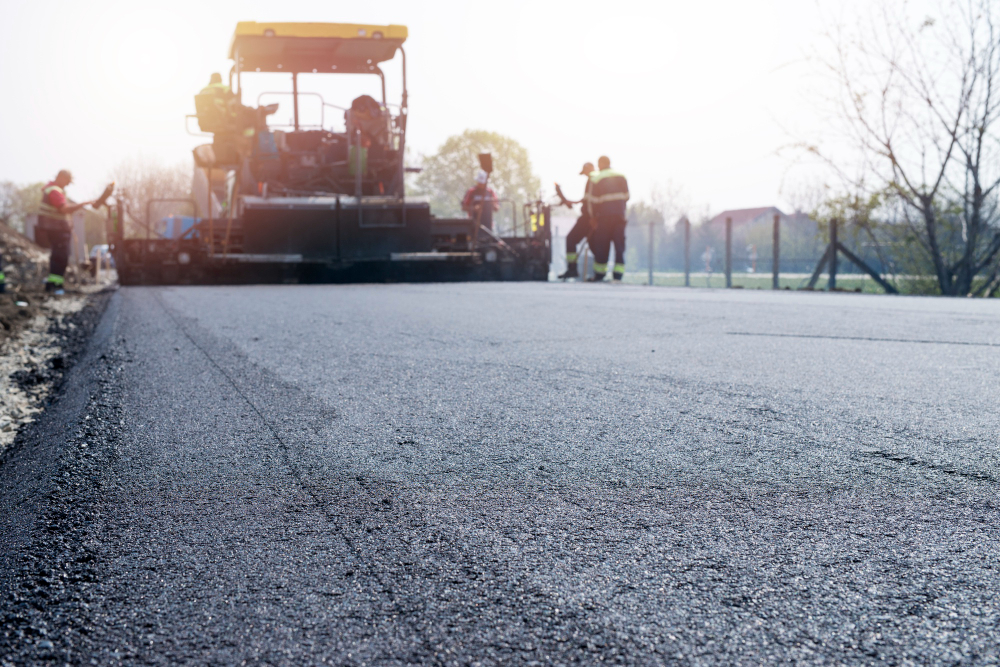
Cracked pavement, potholes, and worn surfaces plague countless driveways, parking lots, and roadways across Florida. While complete asphalt replacement might seem like the obvious solution, there's often a more cost-effective alternative that can restore your pavement's functionality and appearance: asphalt resurfacing.
Asphalt resurfacing involves applying a new layer of asphalt over an existing pavement surface. This process can extend the life of your pavement by 10-15 years when done correctly, making it an attractive option for property owners looking to address surface-level damage without the expense of full reconstruction. Understanding when resurfacing is appropriate and how the process works can help you make informed decisions about your pavement maintenance needs.
Asphalt resurfacing, also known as overlay, is a pavement restoration technique where a new layer of hot mix asphalt is applied directly over the existing surface. This process typically involves adding 1.5 to 2 inches of new asphalt material, creating a smooth, durable surface that addresses many common pavement problems.
The key to successful resurfacing lies in proper surface preparation. Before the new asphalt layer is applied, contractors must clean the existing surface, fill significant cracks and holes, and ensure proper drainage. This preparation work is crucial for achieving a long-lasting result.
Unlike simple patching or crack sealing, resurfacing covers the entire surface area, providing uniform appearance and performance. The process can transform aged, weathered pavement into a surface that looks and performs like new construction.
Several indicators suggest that your pavement might be a good candidate for resurfacing rather than complete replacement. Surface-level cracking, including alligator cracking that hasn't penetrated to the base layer, often responds well to resurfacing. Similarly, oxidation and weathering that has left your asphalt looking gray and worn can be effectively addressed through this process.
Pavement that shows signs of raveling—where small stones and sand particles are beginning to separate from the surface—benefits significantly from resurfacing. Minor depressions and slight unevenness can also be corrected, improving both appearance and functionality.
However, resurfacing isn't suitable for all pavement conditions. Structural problems, such as base failure or significant settling, require more extensive repair before resurfacing can be effective. Pavement with extensive deep cracking or areas where the base material is compromised typically needs full reconstruction rather than resurfacing.
Professional asphalt resurfacing follows a systematic approach that ensures optimal results. The process begins with a thorough assessment of the existing pavement condition. Contractors evaluate the structural integrity of the base layer and identify areas requiring preliminary repairs.
Surface preparation represents the most critical phase of resurfacing. This involves cleaning debris, vegetation, and loose material from the existing surface. Significant cracks and holes must be filled and leveled before the new asphalt layer can be applied. Proper preparation also includes addressing drainage issues that might compromise the longevity of the resurfacing work.
The actual resurfacing involves heating and applying hot mix asphalt over the prepared surface. Professional crews use specialized equipment to ensure uniform thickness and proper compaction. The new surface must be rolled and finished while the material remains at optimal temperature for bonding and compaction.
Quality control during application is essential. Contractors monitor material temperature, application thickness, and compaction levels to ensure the new surface meets performance standards. Proper edge treatment and joint sealing complete the process, creating a seamless transition between the resurfaced area and adjacent pavement.
Cost effectiveness stands out as the primary advantage of resurfacing over complete reconstruction. Resurfacing typically costs 30-50% less than full replacement while providing many of the same benefits. This makes it an attractive option for budget-conscious property owners who need to address pavement deterioration.
The process also offers significant time savings compared to reconstruction. Most resurfacing projects can be completed in a fraction of the time required for complete pavement replacement, minimizing disruption to business operations or daily activities.
From a performance standpoint, properly executed resurfacing can provide 10-15 years of additional service life. The new surface improves traction, reduces maintenance needs, and enhances the overall appearance of your property. Additionally, resurfacing is more environmentally friendly than complete replacement, as it reuses the existing base structure and reduces material waste.
Protecting your investment in asphalt resurfacing requires ongoing maintenance. Regular cleaning removes debris that can trap moisture and accelerate deterioration. Prompt attention to small cracks prevents water infiltration that could compromise the bond between the new surface and existing pavement.
Sealcoating every 2-3 years provides additional protection against UV damage, chemical spills, and moisture penetration. This preventive measure can significantly extend the life of your resurfaced pavement while maintaining its appearance.
Regular inspections help identify potential problems before they become major issues. Professional assessment can determine when minor repairs or maintenance treatments are needed to preserve the integrity of the resurfaced surface.
While some property owners consider DIY resurfacing, this process requires specialized equipment, materials, and expertise that make professional installation the preferred choice. Hot mix asphalt must be applied at specific temperatures and compacted properly to achieve lasting results.
Professional contractors bring experience in surface preparation, material selection, and application techniques that directly impact the longevity of the resurfacing project. They also carry insurance and provide warranties that protect your investment.
The complexity of proper drainage management, edge treatment, and joint construction makes professional installation essential for achieving optimal results. Attempting DIY resurfacing often leads to premature failure and ultimately higher costs.
Asphalt resurfacing offers an excellent solution for pavement restoration when conditions are appropriate. The process can provide years of reliable service while improving safety, appearance, and property value. Success depends on proper assessment of existing conditions, quality surface preparation, and professional installation.
If you need professional asphalt repairs in Daytona Beach, FL, contact Florida Sealcoating today to get a quote. Their experienced team can evaluate your pavement condition and recommend the most cost-effective solution for your specific needs.